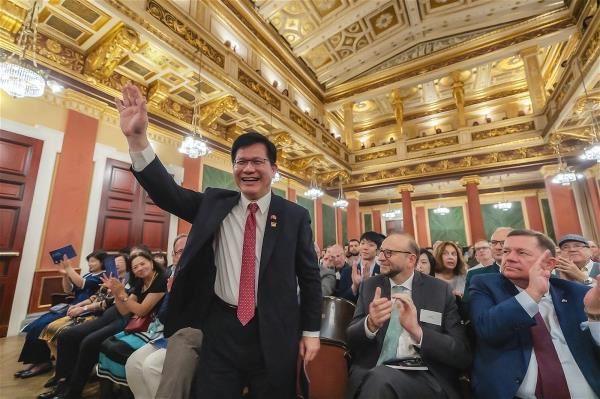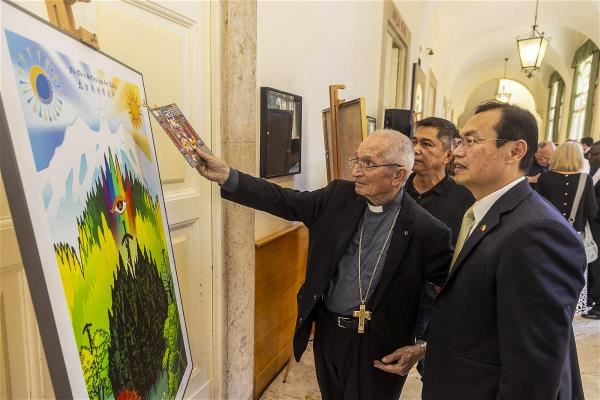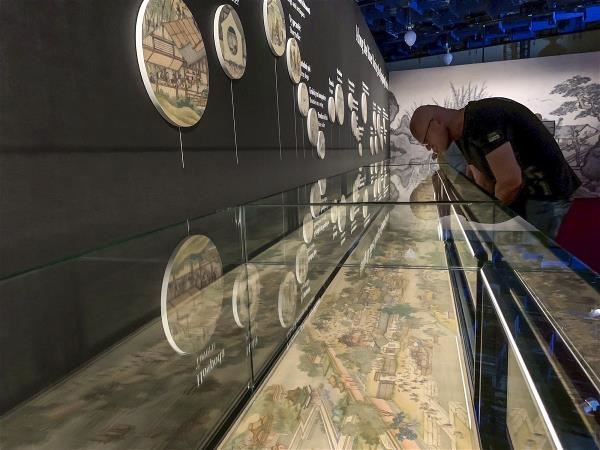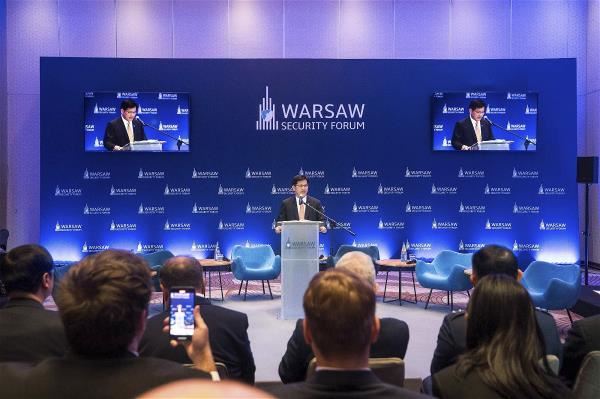2025-11-26
(Courtesy of Taiwan Panorama November 2025)
Cathy Teng /photo by Kent Chuang /tr. by Phil Newell

How is Taiwan understood by the world? As a silicon chip island? As a model of pandemic response? As a gender-friendly society? Or as a symbol of democracy and freedom? There is no one single answer. This is because under the world’s gaze, Taiwan is continually being reexamined and reinterpreted.
On the global political chessboard, Taiwan’s international situation is often labeled as “difficult.” As interactions between Taiwan and other countries are obstructed by geopolitics, we have chosen another path: bringing diplomacy out of the conference rooms and into museums, film festivals, concert halls, and even online platforms. Wherever culture can foster dialogue, there you will find Taiwan’s diplomacy at work.
Minister of Foreign Affairs Lin Chia-lung has proposed the concept of “integrated diplomacy,” in which “cultural diplomacy” is especially critical. It does not use the language of power, but involves building bridges with creativity, emotions, and values. By first touching people’s hearts and inspiring understanding, Taiwan builds sincere partnerships around the world.

Culture as an anchor of shared wellbeing
“Despite the many obstacles we face, Taiwan’s foreign policy must proactively engage the world. In this respect, culture is the best medium,” says Lin.
Over recent years, Taiwan has used culture as a bridge to proactively showcase diverse values on the international stage. At the Paris Cultural Olympiad in 2024, performance troupes from Taiwan dazzled European audiences. In the first half of 2025, at the Expo 2025 world’s fair in Osaka, Taiwan’s TechWorld pavilion presented a vision of harmonious wellbeing—among people, with nature, and through innovation. In the second half of the year, the 100 Treasures, 100 Stories exhibition of works from the National Palace Museum opened at the National Museum of the Czech Republic, and it is expected to spark a wave of interest in Taiwan across Europe.
Other cultural activities include performances by the National Chinese Orchestra Taiwan, the performance of Sword of Wisdom by U-Theatre at the Romaeuropa festival, the exhibition Gloria: Taiwanese Artist Hsieh Sheng-min’s Religious and HOPE Artworks, the When East Meets West concert, and the Ocean Taiwan: Landscapes and Paintings exhibition at 23 of Taiwan’s representative offices in Europe. Taken together, these events constitute a series of warm yet resolute invitations sent from our island to the world.
“Culture stresses mutual understanding and appreciation. Thus it fosters identity, and with identity comes subjectivity. Every ethnic community has its own culture and all can interact and share with each other,” says Lin.
He adds that the development of European civilization has been the product of pluralism and shared prosperity. Through the mingling of languages, histories, and ethnic identities, a sparkling culture has been created, beautiful as a rainbow, rooted in diversity. At its core, cultural diplomacy discovers common ground in diversity, allowing Taiwan to contribute its creativity and values to the global conversation of civilizations.

From values to value-added
Since taking office, Lin Chia-lung has frequently visited foreign countries. He says with a smile that the question he is asked most often is: “Does Taiwan’s semiconductor industry want to invest here?”
The international community widely shares the image of Taiwan as a high-tech island. Nonetheless, Lin believes that Taiwan must present itself to the world in more diverse ways, and this is the spirit of the integrated diplomacy that he advocates.
“We need to use different methods and different emphases to find common ground with different countries or regions,” Lin suggests. He cites the example of his recent visit to Poland to attend the Warsaw Security Forum 2025, where he spoke on the theme of reconstructing the global democratic supply chain. He emphasized that Taiwan, as a democratic partner sharing values with like-minded nations, can play a key role in think-tank interactions and policy dialogues. This involves the practical implementation of “think-tank diplomacy.”
Lin considers Taiwan’s relationship with the Philippines, a New Southbound Policy partner country, to be a model case of “integrated diplomacy.”
He points out that Taiwan and the Philippines are both democratic countries and share similar values. In terms of security, they form part of the “first island chain” around East Asia, and in the face of the expansion of Chinese authoritarianism, they share closely intertwined fates. Today, any changes in the situation in the Taiwan Strait can affect the stability of the entire Indo-Pacific region.
On this foundation, Taiwan and the Philippines have also pursued economic cooperation to improve the quality of life of their peoples. Taiwan has proposed the idea of a “Taiwan–Philippines Economic Corridor,” which dovetails with the Luzon Economic Corridor project initiated by the US, Japan, and the Philippines, thereby deepening regional partnership.
“This is why Taiwan must progress from ‘values diplomacy’ to ‘value-added diplomacy,’” says Lin. While shared ideals are important, if parties can create value-added, so that cooperation brings practical benefits, this will be the most persuasive force in Taiwan’s diplomacy in the new era.

Making the world remember Taiwan
In September, Taiwan suffered a heartbreaking natural disaster, but it also highlighted the resilience of our society. Typhoon Ragasa brought torrential rains that caused a barrier lake on Matai’an Creek to overflow, unleashing a deadly flood through Hualien County’s Guangfu Township. The disaster engulfed streets, homes, and farmland in thick mud, leaving local residents desperate.
However, volunteers from across Taiwan flocked to Guangfu and threw themselves into the relief effort, clearing away the mud and debris shovelful by shovelful. Private citizens became “shovel supermen,” their actions demonstrating the cohesiveness of Taiwanese society. This story even made it into international media.
This kind of strength is also expressed in the determination and resilience of Taiwan’s diplomacy. Given the reality that we cannot participate freely in international organizations, Taiwan has continued to use creativity and action to break down barriers, employing culture and friendship to engage in dialogue with the world. Lin says: “Although Taiwan has been marginalized and cannot freely participate in this world, in fact we have been using various methods to engage other countries and demonstrate Taiwan’s capabilities. These methods constitute an important force in diplomacy that can touch hearts and minds.”
Like the “shovel supermen” bringing help to Hualien, Taiwan is building connections instead of confrontations. Through each cultural interaction and collaboration, it is creating a network of international understanding. Taiwan’s strategy of cultural soft power employs the gentlest of methods to win the deepest possible understanding and respect from the international community, even as it redefines Taiwan’s image on the world stage. This is the spirit of “Taiwan is everywhere, Taiwan belongs to the world.”




